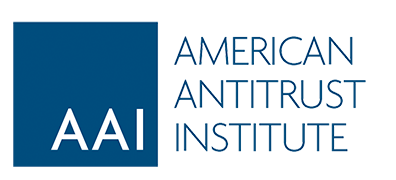I am Jonathan W. Cuneo. I practice law here in Washington and am the principal of The Cuneo Law Group, P.C., with six lawyers. Since I graduated from law school, one of my primary areas of specialization has been antitrust law. I worked for three years in the General Counsel’s Office of the Federal Trade Commission and then became Counsel to the Subcommittee on Monopolies and Commercial Law of the House Committee on the Judiciary. As a staff member, I assisted that Subcommittee in its review of energy mergers in the early 1980s. Since leaving government service for the private sector, I have practiced actively in the antitrust area. In the past, I have represented petroleum retailers, including the Service Station Dealers of America. I am currently a Director of the American Antitrust Institute, a nonprofit educational and research organization, on whose behalf I am appearing today. .
It is an honor to appear before you today to urge that the federal antitrust authorities adopt a vigilant enforcement posture with respect to mergers, especially those in the oil industry. The recent wave of merger and consolidation in that industry threatens to reduce the former Seven Sisters to only five, each with billions of dollars of sales, global operations, multinational political clout, and with a tremendous impact on the lives of consumers, workers, communities and the environment.
The federal antitrust enforcement scheme confers jurisdiction on the Antitrust Division of the Department of Justice and the Federal Trade Commission to review mergers under Section 7 of the Clayton Act. Significantly, the legal test for determining whether a merger is legal is not whether it will certainly lead to a diminution in competition, but whether its incipient effect “may be substantially to lessen competition, or to tend to create a monopoly.”
The 1976 Hart-Scott-Rodino Act requires merging entities to notify the federal antitrust authorities in advance of a merger, and empowers the governmental agency (either the FTC or the Antitrust Division) to seek relevant information to determine whether to mount a court challenge to the merger. The law protects this information from public disclosure, so only the agency and the merging parties have full access to the relevant information. After the expiration of the HSR time periods, entities are free to merge unless the government has obtained a federal court order to enjoin the merger. Under current practice, the antitrust agencies typically inform merging parties of their specific concerns about a proposed transaction to afford the merging entities an opportunity to “cure” any problem. As a practical matter, once the parties merge, the government will not come back to attack the merger later. Thus, the decision made under the time constraints of the premerger process will dictate the outcome.
Antitrust and big oil have a long, checkered history. The Supreme Court broke up the Standard Oil Trust in an early monopoly case. Two of the major companies that came from the breakup were Standard Oil of New Jersey, now called Exxon, and Standard Oil of New York, now called Mobil.
In the 1950s, the renowned antitrust economist John Blair, who worked for the FTC and Senator Philip Hart’s Senate Subcommittee, published path-breaking studies on the state of competition in the petroleum industry. Senators Frank Church and Henry Jackson also conducted major eye-opening investigations of the oil industry in the 1970s.
In the 1970s, the international oil cartel was perhaps the most significant and successful example of anticompetitive conduct in history, realigning world power, destabilizing economies and toppling governments. That action is precisely the type of output restriction that all antitrust doctrine abhors and would have violated the antitrust laws but for the involvement of foreign sovereigns.
Now, the FTC must determine if the proposed Exxon-Mobil combination, the largest industrial merger in history, violates Section 7 of the Clayton Act in whole or part. The agency’s responsibility is immense. A merger can create efficiencies, which may be beneficial to consumers only if they are passed on to them, or create bottlenecks that gouge us all. Proclaimed efficiencies are very often overblown in projections of what a merger will bring. The FTC should take a skeptical attitude toward the claims being made. Why do the companies need this merger to obtain efficiencies?
Such a merger can also lead to less competition, diminished productivity, lost jobs, and wrecked communities. The current airline service situation, which leaves many areas and communities at the mercy of a single air carrier, is the direct result of lax federal merger policy in the 1980s.
How should the FTC approach the Exxon-Mobil merger? With a great deal of skepticism, in my view. Unlike previous mergers that were approved with divestiture, the FTC should consider opposing the merger outright unless it is completely satisfied that it will not result in diminished competition. Under current doctrine, size alone is not a sufficient legal reason to block a merger; in my view, size should be a factor in how closely the FTC looks at whether consumers will be harmed. The FTC must forecast the likely effects of a merger on competition in specific product and geographic markets. Exxon-Mobil involves two huge, profitable, mature, well-capitalized, fully integrated multinational enterprises in an industry with historical monopoly and cartel problems. Moreover, the BP-Amoco deal, while not raising serious antitrust concerns, demonstrates a trend toward industry concentration. The “red flags” for deep antitrust concern are present.
To accomplish a review consistent with its responsibilities, the FTC must undertake an intense market-by-market analysis of the likely competitive impact of the merger. The oil business is a complex one and the participants employ a dizzying array of joint ventures, supply and marketing arrangements, and other cooperative, noncompetitive arrangements. Any organizational chart resembles a bird’s nest. Given this complexity, the size of the merger, and the costs of a mistake the FTC should be extremely cautious in providing the type of informal merger advice it sometimes gives.
Please do not be misled by today’s low oil prices. Both Exxon and Mobil have enjoyed multi-billion dollar profits in recent years. The current low petroleum prices are an historical aberration. We must treat this merger with an eye to the future. This merger would look and feel extremely different if prices at the gas pump were higher or increasing. The FTC must assure itself that this proposed merger in conjunction with a pronounced trend toward concentration in the industry and strong reasons to think this merger will engender further mergers, does not in any way contribute to or facilitate output-reducing cartel behavior in production. Any person who drove a car, paid heating bills, or was not inflation-proof in the 1970s understands that American antitrust policy cannot countenance any risk of repetition of that experience. In the 1970s, the federal antitrust authorities conducted significant investigative activities with respect to big oil — with strong support from the Congress. The FTC must not now permit any industrial combinations that would facilitate supply disruption.
Distribution arrangements are extremely important to both price and service. Media accounts and recent history with the BP-Amoco merger suggest that the FTC will primarily focus on refining markets, which are regional, and distribution markets, which are local. Statistics that Exxon and Mobil control only a modest share of refining and distribution markets nationally are irrelevant. Gasoline refined along the Gulf Coast is not transported to Spokane, Washington for retail sale. For example, California may really be a separate market. Prices there have stayed higher than the rest of the country.
The oil companies themselves regard retailing as local. They perform exhaustive studies by metropolitan area. Why? No one who lives in Michigan travels to Kentucky, Maryland or Montana to buy gas. Gasoline retailing is inherently local. The FTC must make a geographical analysis market-by-market to determine if the proposed merger would create anticompetitive consequences. If it makes such a determination, then it can condition its approval on the divestiture of overlapping assets. It is important that any such divestitures be real — that the merger participants be viable and actually put those assets to full competitive use.
One detrimental effect of a merger such as this could be that some communities lose competing retailers. Decisions about where to locate retail outlets, what their operations will be (e.g., will they be full service or combined with convenience stores), what prices they will charge, and what hours of operation they will observe are all-important to consumers. For example, in California, San Diego and San Francisco have particularly high retail gas prices — they also have fewer competing retailers. I would urge the FTC to study the California situation in particular. The California experience teaches that increased concentration leads to higher prices — a good reason to take an aggressive stand on this merger.
The FTC must complete these tasks in accordance with strict statutory timetables that are relatively compressed. In addition, the FTC must continue to analyze the thousands of other simultaneous HSR merger filings. With limited resources, that task is daunting. The Congress can help by ensuring that the FTC has adequate resources and by securing a commitment from the merging entities to cooperate fully in the FTC review. Congress needs to maintain its oversight responsibilities to make sure the FTC does a good job.


